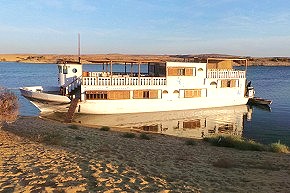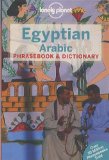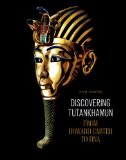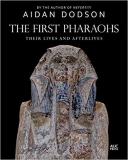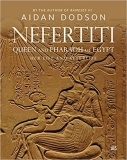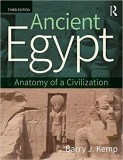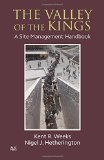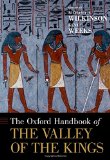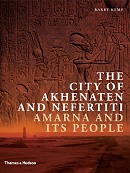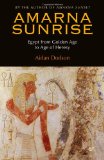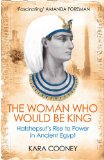We Provide
- Building Land
- Gabawi *1712 (350 sqm)
- Gorf *2105 (525 sqm)
- Gorf *2206 (700 sqm)
- Aqalta *2207 (1,050 sqm)
- House Building Service
- Architecture
- Real Estates
- Villa Hana, Ramla
- Shell Apartment Papyrus, Habu
- Apartment Hatshepsut 2, Gezira
- Apartment Hatshepsut 3, Gezira
- Apartment Hatshepsut 4, Gezira
- Holiday Flats
- Hatshepsut 1 (1 BR), Gezira
- Hatshepsut 2 (1 BR), Gezira
- Nile View (1 BR), Ramla
- Hatshepsut 3 (2 BR), Gezira
- Hatshepsut 4 (2 BR), Gezira
- Hatshepsut 5 (2 BR), Gezira
- Hatshepsut 7 (2 BR), Gezira
- Hatshepsut 9 (2 BR), Gezira
We Organise
We Report
- Sorry, no more news!
- News 2014 (26)
- News 2013 (76)
- News 2012 (92)
- News 2011 (125)
- News 2010 (31)
- News 2009 (12)
- News Overview
Useful Tools
Dahabiya Nile Cruises• from Esna to Aswan |
Lake Nasser Cruises• from Aswan or Abu Simbel |
![]()
Living in Luxor - Bookshop: Luxor/Egypt Books
Here is a list of books we recommend - guide books, phrase books, art guides, as well as books about modern Egypt. Clicking on a title, you will reach amazon.co.uk and see the current prices.
Egypt Guide Books: |
|
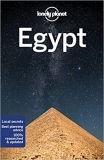 |
Egypt (Lonely Planet Country Guides) ~ Anthony Sattin, Jessica Lee Lonely Planet Publ., 2021 Lonely Planet Egypt is your passport to the most relevant, up-to-date advice on what to see and skip, and what hidden discoveries await you. Visit the ancient wonders of the Pyramids of Giza, cruise the Nile to a waterside temple, or see the glittering finds in the Egyptian Museum; all with your trusted travel companion. Get to the heart of Egypt and begin your journey now! |
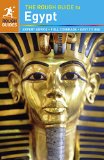 |
The Rough Guide to Egypt ~ Dan Richardson Rough Guides, 2013 The new full-colour Rough Guide to Egypt is the definitive guide to this amazing country, whose ancient civilization still fascinates today. But there's more to Egypt than just pyramids and temples. The Red Sea offers some of the world's finest diving, a few hours by air from Europe. There are awesome dunes and lush oases to explore in its deserts, and fantastic bazaars and mosques in the capital, Cairo. Detailed accounts of every attraction, along with crystal-clear maps and plans, make it easy to access anything from remote oases to nightlife that only locals know. |
 |
Egypt (DK Eyewitness Travel Guide) ~ Collectif Dorling Kindersley, 2013 The uniquely visual DK Eyewitness Travel guide will help you to discover everything region-by-region; from local festivals and markets to day trips around the countryside. Detailed listings will guide you to the best hotels, restaurants, bars and shops for all budgets, whilst detailed practical information will help you to get around, whether by train, bus or car. Plus, DK's excellent insider tips and essential local information will help you explore every corner of Egypt effortlessly. |
 |
Travel Egypt Nile Cruise ~ Janet Wood Michael Wood, 2011 Looking for a travel guide that dares to be honest? Unlike the cruise booklet that most Tour Operators send out with your booking, our Cruise Guide book tells you how it really is. Given from an experienced perspective that does not shy away from confronting the issues, it provides a valuable insight into what you can expect from a Nile Cruise by letting you know the scams, as well as the pleasures awaiting you on your Egyptian vacation. Our Travel Egypt book offer straight answers, with sound advice and is illustrated throughout with over 100 black and white photographs. |
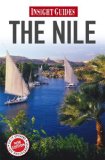 |
Insight Guides: Nile ~ Apa Insight, 2010 This brand new edition of the Insight Guide to the Nile has been fully revised and updated. This guide includes a section detailing the history of the area with detailed information on Pyramidology, Ancient Gods, the rise of Christianity, the spread of Islam and much more. Features cover aspects of the life and culture, ranging from Taming the Nile, the history of Nile cruising, the people of the Nile and Egyptian cuisine, alongside others. This new edition contains over 250 brand-new photographs, which, along with revised text, brings this edition up-to-date, along with several maps. |
 |
Luxor, Karnak, and the Theban Temples (Egypt Pocket Guides) ~ Alberto Siliotti The American University in Cairo Press, 2002 The temples on the banks of the Nile at Luxor contain some of the world's most stunning art, and this guide describes the best of it - the great temple complex of Karnak, the elegant architecture of Luxor temple and the Theban temples. |
Egypt Map: |
|
 |
Egypt Nelles Map: Special maps: River Nile Valley, Hurghada, Sharm el-Sheikh, Giza Pyramid Complex, Luxor, Valley of the Kings, Aswan / City maps: Cairo, Alexandria Nelles, 2010 Scale of cartography is 1:750,000 and 1:2,500,000 and legend is in four languages. Rich in detail, it features transport systems including major and minor roads, down to partially surfaced roads and cart tracks, plus rail networks and airports. Physical relief shading includes spot heights and names of mountain ranges. Major tourist sites are highlighted and distance indicators are also included. The high quality paper ensures long-lasting durability and easy folding. |
Egyptian Arabic Phrase Books: |
|
| Lonely Planet Egyptian Arabic Phrasebook & Dictionary Lonely Planet Publ., 2014 With Lonely Planet's Egyptian Arabic Phrasebook, let no barriers - language or culture - get in your way. Grab this phrasebook and ride a camel around the Pyramids of Giza, visit the ancient monuments at Luxor, or take a relaxing cruise on the Nile. Our phrasebooks give you a comprehensive mix of practical and social words and phrases in more than 120 languages. Chat with the locals and discover their culture - a guaranteed way to enrich your travel experience. |
|
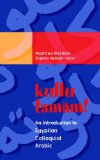 |
Kullu Tamam!: An Introduction to Egyptian Colloquial Arabic ~ Manfred Woidich The American University in Cairo Press, 2004 There are basically two types of Arabic: the local vernaculars and Modern Standard Arabic, which is restricted to writing and to speaking in formal settings. Anyone wanting to have a good command of the Arabic language must learn both varieties. Kullu tamam! takes account of this diversity in two ways: It introduces the student to the language by means of Egyptian Colloquial Arabic, and provides a basis for those who want to go on to learn Modern Standard Arabic. |
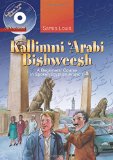 |
Kallimni 'Arabi Bishweesh: A Beginners' Course in Spoken Egyptian Arabic 1 ~ Samia Louis The American University in Cairo Press, 2009 Drawing on her years of experience as an Arabic instructor and course developer, Samia Louis has used a functional approach to create a bright, innovative set of coursebooks for the study of Egyptian colloquial Arabic the spoken dialect most frequently studied and most widely understood in the Arab world. Designed according to the ACTFL guidelines for teaching Arabic as a foreign language, each book of Kallimni 'Arabi trains students through highly structured lessons in the crucial skills, with particular emphasis on listening and speaking, using real-life situations and expressions. The accompanying audio CD carries recordings of the dialogs and exercises in each chapter, made by Egyptian native speakers. |
Ancient Egypt: |
|
| Discovering Tutankhamun: From Howard Carter to DNA ~ Zahi Hawass American University in Cairo Pr., 2013 Penned by a scholar who was personally involved in research into the enigmatic young pharaoh, this comprehensive and fully illustrated new study reviews the current state of our knowledge about the life, death, and burial of Tutankhamun in light of the latest investigations and newest technology. Zahi Hawass places the king in the broader context of Egyptian history, unraveling the intricate and much debated relationship between various members of the royal family, and the circumstances surrounding the turbulent Amarna period. He also succinctly explains the religious background and complex beliefs in the afterlife that defined and informed many features of Tutankhamun's tomb. The history of the exploration of the Valley of the Kings is discussed, as well as the background and mutual relationships of the main protagonists. The tomb and the most important finds are described and illustrated, and the modern X-raying and CT-scanning of the king's mummy are presented in detail. The description of the latest DNA examination of the mummies of Tutankhamun and members of his family is one of the most absorbing parts of the book and demonstrates that scientific methods may produce results that cannot be paralleled by traditional Egyptology. |
|
|
Tutankhamun, King of Egypt: His Life and Afterlife (Lives and Afterlives) ~ Aidan Dodson AUC, 25 October 2022 An innovative account of the life of Tutankhamun, the rediscovery of his existence, and the enduring impact of the finding of his tomb, by leading Egyptologist Aidan Dodson The spectacular discovery of Tutankhamun's tomb in 1922 has given him an afterlife that has all but eclipsed the young king's real career. This authoritative yet accessible book tells the story of Tutankhamun, from his own lifetime in the fourteenth century BC, down to modern times. It explores the various theories as to his parentage, his role in the 'counter-reformation' that followed the religious revolution of Akhenaten, and his premature death. It also looks at the monuments built during the king's reign, his key officials, and the arrangements made for his funeral. Richly illustrated in full color throughout, this fascinating book by a leading Egyptologist will be essential reading for anyone interested in the life and enduring legacy of ancient Egypt's most famous king. |
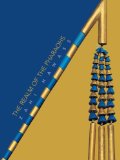 |
The Realm of the Pharaohs (Treasures of Ancient Egypt) ~ Zahi Hawass White Star, 2006 In this superbly illustrated volume, distinguished Egyptologist Zahi Hawass guides readers through the architectural landscape of ancient Egypt, from the houses and palaces of the living to the temples of the gods to the tombs of the dead. Hundreds of photographs and a compelling text unveil the mysteries of pharaonic Egypt as unearthed through major excavations, revealing fresh insight into how the ancient Egyptians lived, how they prepared for death, and how they perceived their own place within the universe. The Realm of the Pharaohs takes readers on a tour of the most important sites of ancient Egypt. It recounts the history of the most famous kings and queens and shares details of the everyday lives of the people. Rreaders will learn little-known facts about the lives of the people and royalty of Ancient Egypt, as well as live vicariously through the anecdotes of one of Egypt's preeminent Egyptologists. |
|
The First Pharaohs: Their Lives and Afterlives ~ Aidan Dodson AUC, 2021 The five centuries that followed the unification of Egypt around 3100 BC - the first three dynasties - were crucial in the evolution of the Egyptian state. During this time all the key elements of the civilization that would endure for three millennia were put in place, centered on the semidivine king himself. The First Pharaohs: Their Lives and Afterlives looks at what we know about the two-dozen kings (and one queen-regent) who ruled Egypt during this formative era, from the scanty evidence for the events of their reigns, through to their surviving monuments. It also considers how they were remembered under their successors, when some of the earliest kings' names were attributed to allegedly ancient ideas and events, and the ways in which some of their monuments became tourist attractions or were even wholly repurposed. Aidan Dodson recounts how two centuries of modern scholarship have allowed these rulers to emerge from an oblivion so total that some archaeologists had come to doubt their very existence outside the works of ancient chroniclers. Then, within a decade at the end of the nineteenth century, archaeological discoveries revealed a whole series of tombs and other monuments that not only confirmed these rulers' existence, but also showcased the skills of Egyptian craftsmen at the dawn of history. |
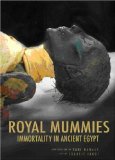 |
Royal Mummies ~ Francis Janot and Zahi A. Hawass White Star, 2008 Written in an authoritative yet accessible tone, this essential resource provides an information-packed overview of royal mummies. The text describes the ancient Egyptians belief in the afterlife and how mummification ensured their bodies were preserved for eternity. Revealing the secrets of the embalming room, the meaning of the amulets found with mummies, and the ornate splendor of the mummies themselves, this volume explores all facets of a practice that lasted for more than 3,000 years, starting around 2,500 B.C. Spotlighting such renowned examples of well-preserved mummies as Tutankhamen, Seti I and Ramses the Great, 200 color photographs depict the ornate sarcophagi, hieroglyphics, and amulets that add to the mystique of the mummy. |
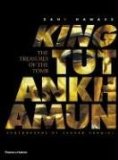 |
King Tutankhamun: The Treasures of the Tomb ~ Zahi Hawass Thames & Hudson, 2007 The tomb of Tutankhamun, with its breathtaking treasures, remains the most sensational archaeological find of all time. This brilliantly illustrated volume takes the reader through Tutankhamunâs tomb room-by-room in the order that it was discovered and excavated by Howard Carter. Dr. Zahi Hawass imbues the text with his own inimitable flavour, imagining how the uncovering and opening of the tomb must have felt for Carter, while Sandro Vannini's extraordinary photographs reproduce the objects in infinitesimal detail. This sumptuous volume is the definitive record of Tutankhamunâs glittering legacy. |
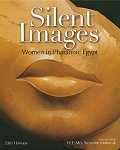 |
Silent Images: Women in pharaonic Egypt ~ Zahi A. Hawass The American University in Cairo Press, 2009 This beautifully produced new paperback edition of "Silent Images" explores a puzzling contradiction: Despite the multitude of artifacts and texts that have come to us from ancient Egypt, much still remains obscure regarding the lives of women. Women were, from the historical perspective, silent - but how should this silence be interpreted? What was the reality of women's lives behind the standardized images? Zahi Hawass's book searches for a more realistic picture of women's lives in ancient Egypt. As well as reconsidering the evidence from tomb and temple, the author draws on unpublished material from his excavations at the workers' cemetery at Giza, which sheds light on the womenfolk of the workmen who built and maintained the pyramids. The text is complemented by lavish illustrations of places and objects, many made especially for this book. |
|
Nefertiti, Queen and Pharaoh of Egypt: Her Life and Afterlife (Lives and Afterlives) ~ Aidan Dodson AUC, 2020 Nefertiti's name and face are perhaps the best known of any royal woman of ancient Egypt, yet for many she is little more than an icon or archetype of ancient beauty. However, recent research has fleshed out our knowledge - or at least credible hypotheses - about her life and career, pointing to her being an important political figure in her own right, rather than simply the principal spouse of the so-called "heretic king", Akhenaten, and mother-in-law (if not mother) of Tutankhamun. In Nefertiti, Queen and Pharaoh of Egypt, Aidan Dodson explores what we actually know about Nefertiti, and what we can realistically extrapolate about her from the diverse and often incomplete data that survives regarding her life from the late fourteenth century BC. In doing so, he sketches a career that saw Nefertiti begin as a scion of a royally connected provincial military family and end as a fully fledged female pharaoh, who played a crucial role in the first stages of the return to orthodoxy from her late husband's religious revolution. All indications are that her final fate was a tragic one, but although every effort was made to wipe out Nefertiti's memory after her death, modern archaeology has rescued the queen-pharaoh from obscurity and set her on the road to the status of a modern cultural icon. |
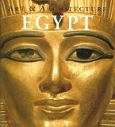 |
Egypt (Art & Architecture) ~ Matthias Seidel Konemann, 2006 The book is beautifully illustrated with over 600 colour illustrations. The highly readable texts have been written by experts and give you concentrated information on accessing well-known and less known sites in the word of art. An image of every piece of art that is described is included, allowing readers to easily recognize the original on-site. Insets on cultural-historical topics and illustrated glossaries, summaries, and timelines supplement the body text - leaving a deeper, more lasting impression of the material that is covered. |
|
Ancient Egypt - Anatomy of a Civilisation ~ Barry J. Kemp Routledge, 2018 This fully revised and updated third edition of the bestselling Ancient Egypt seeks to identify what gave ancient Egypt its distinctive and enduring characteristics, ranging across material culture, the mindset of its people, and social and economic factors. In this volume, Barry J. Kemp identifies the ideas by which the Egyptians organized their experience of the world and explains how they maintained a uniform style in their art and architecture across three thousand years, whilst accommodating substantial changes in outlook. The underlying aim is to relate ancient Egypt to the broader mainstream of our understanding of how all human societies function. Source material is taken from ancient written documents, while the book also highlights the contribution that archaeology makes to our understanding of Egyptian culture and society. It uses numerous case studies, illustrating them with artwork expressly prepared from specialist sources. Broad ranging yet impressively detailed, the book is an indispensable text for all students of ancient Egypt and for the general reader. |
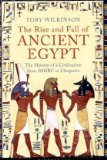 |
The Rise and Fall of Ancient Egypt ~ Toby Wilkinson Bloomsbury Publishing PLC, 2010 In this magnificent history, Toby Wilkinson combines grand narrative sweep with detailed knowledge of hieroglyphs and the iconography of power, to reveal Ancient Egypt in all its complexity. For the first time we see the relentless propaganda, the cut-throat politics, the brutality and repression that lay behind the appearance of unchanging monarchy as well as the extraordinary architectural and cultural achievements for which it is justly famous. |
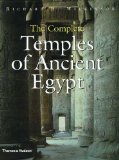 |
The Complete Temples of Ancient Egypt ~ Richard H. Wilkinson Thames & Hudson, 2010 A comprehensive survey of all Egypt's temples, from Luxor and Karnak to those in the delta, oases and Nubia. It traces the processes of building and decorating, how they functioned, and what happened when they were robbed and desecrated. It also discusses the Egyptian pantheon, rites and festivals. |
 |
The Complete Valley of the Kings: Tombs and Treasures of Egypt's Greatest Pharaohs ~ C. N. Reeves, Richard H. Wilkinson Thames & Hudson, 2008 This account of the Valley of the Kings brings together its art, archaelogy and history in one volume arranged thematically. Famous as the burial place of the great New Kingdom pharaohs - such as Tutankhamun, Ramses the Great and Tuthmosis IV - this valley contains some 80 tombs which were dug at the climax of Egyptian power more than 3000 years ago. The account includes full descriptions of over 80 tombs, complete with factfiles, lists of contents and computer-generated perspective cutaway views. It describes the burials and mummies of famous pharaohs, from Tutankhamun and gives a blow-by-blow account of the rediscovery of the tombs, from Greek and Roman times to Howard Carter and the present day. It details the latest research by the international teams in the valley, including the discovery of the tomb for the sons of Ramses the Great. The planning and ritual purpose of the tombs is also described, from the royal workforce to the scenes from the mysterious "afterlife" books adorning the tomb wall. A full reference section, including a guide to visiting the valley, is also given. |
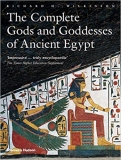 |
The Complete Gods and Goddesses of Ancient Egypt ~ Richard H. Wilkinson Thames & Hudson, 2017 A comprehensive and authoritative illustrated guide to the deities that lay at the heart of Ancient Egyptian religion and society. It examines the evolution, worship and eventual decline of a huge pantheon, from minor figures such as Bas, Babi, Ba-Pef and Taweret to the all-powerful Osiris, Amun, Hathor, Isis and Re. The author considers the differing manifestations, iconography and cult centres of the deities and their fluctuating popularity. He also examines levels of worship, from the king's formal rituals and festivals to popular access and personal piety. The accompanying photographs and drawings depict tomb paintings, temple reliefs, statues and other iconography. |
 |
The Treasures of Luxor and the Valley of the Kings (Art Guides) ~ Kent R. Weeks White Star, 2005 The Tomb of Tutankhamun and its contents are featured prominently, as are the temples of Luxor and Karnak, the dromos, the Luxor Museum, the Chapel of Achoris, the Valley of Asasif, the Ramesseum, the Valley of the Kings, the Valley of the Queens, and the Colossi of Memnon. Dendera, Esna, Abydos, Edfu, and Korn Ombo - all peripheral locations to the major sites - are included because their state of preservation makes them especially interesting for visitors and scholars. Weeks has spent his career documenting the regions and infuses this guide with a level of clarity and detail not previously achieved in a handbook. |
|
|
| The Valley of the Kings: A Site Management Handbook (Theban Mapping Project) ~ Kent R. Weeks, Nigel J. Hetherington The American University in Cairo Press, 2014 A Site management Handbook. The only detailed archaeological site management plan from the Arab world, with wider application to sites worldwide. Kent R. Weeks is professor emeritus of Egyptology at the American University in Cairo and director of the Theban Mapping Project. Nigel J. Hetherington is an archaeologist and television producer and the owner and founder of Past Preservers. He is a graduate of the Institute of Archaeology, University College London and a specialist in tourism and heritage management. |
|
| The Oxford Handbook of the Valley of the Kings (Oxford Handbooks in Archaeology) ~ Richard H. Wilkinson OUP USA, January 2016 The royal necropolis of New Kingdom Egypt, known as the Valley of the Kings (KV), is one of the most important―and celebrated―archaeological sites in the world. Located on the west bank of the Nile river, about three miles west of modern Luxor, the valley is home to more than sixty tombs, all dating to the second millennium BCE. The most famous of these is the tomb of Tutankhamun, first discovered by Howard Carter in 1922. Other famous pharaoh's interred here include Hatshepsut, the only queen found in the valley, and Ramesses II, ancient Egypt's greatest ruler. Much has transpired in the study and exploration of the Valley of the Kings over the last few years. Several major discoveries have been made, notably the many-chambered KV5 (tomb of the sons of Ramesses II) and KV 63, a previously unknown tomb found in the heart of the valley. Many areas of the royal valley have been explored for the first time using new technologies, revealing ancient huts, shrines, and stelae. New studies of the DNA, filiation, cranio-facial reconstructions, and other aspects of the royal mummies have produced important and sometimes controversial results. |
|
| The City of Akhenaten and Nefertiti: Amarna and Its People (New Aspects of Antiquity) ~ Barry Kemp Thames & Hudson, 2013 This book is a remarkable evocation of an ancient city brings together for the first time the history of the site of Tell el-Amarna from its foundation by the pharaoh Akhenaten in c . 1344 bc to its abandonment just 16 or 17 years later, a few years after his death. Nine chapters cover the king's choice of the site and its development, the layout of the city and its buildings, and puts it in the context of the society of the time. Over 260 illustrations, some 50 in colour, bring to life the remains and artefacts found at the site during its excavation. Barry Kemp, Emeritus Professor of Egyptology at Cambridge University, is a world-class scholar and writer and the acknowledged expert on Amarna and Akhenaten. This is certain to become the definitive work. |
|
| Amarna Sunrise: Egypt from Golden Age to Age of Heresy ~ Aidan Dodson The American University in Cairo Press, 2014 The latter part of the fifteenth century BC saw Egypt's political power reach its zenith, with an empire that stretched from beyond the Euphrates in the north to much of what is now Sudan in the south. The wealth that flowed into Egypt allowed its kings to commission some of the most stupendous temples of all time, some of the greatest dedicated to Amun-Re, King of the Gods. Yet a century later these temples lay derelict, the god's images, names, and titles all erased in an orgy of iconoclasm by Akhenaten, the devotee of a single sun-god. This book traces the history of Egypt from the death of the great warrior-king Thutmose III to the high point of Akhenaten's reign, when the known world brought gifts to his newly-built capital city of Amarna, in particular looking at the way in which the cult of the sun became increasingly important to even 'orthodox' kings, culminating in the transformation of Akhenaten's father, Amenhotep III, into a solar deity in his own right. |
|
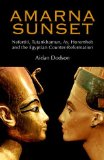 |
Amarna Sunset: Nefertiti, Tutankhamun, Ay, Horemheb, and the Egyptian Counter-reformation ~ Aidan Dodson The American University in Cairo Press, 2009 This is a new account of the return to orthodoxy after Akhenaten's revolution. This new study, drawing on the latest research, tells the story of the decline and fall of the Pharaoh Akhenaten's religious revolution in the fourteenth century BC. Beginning at the regime's high-point in his Year 12, it traces the subsequent collapse that saw the deaths of many of the king's loved ones, his attempts to guarantee the revolution through co-rulers, and the last frenzied assault on the god Amun. The book then outlines the events of the subsequent five decades that saw the extinction of the royal line, an attempt to place a foreigner on Egypt's throne, and the accession of three army officers in turn. Among its conclusions are that the mother of Tutankhamun was none other than Nefertiti, and that the queen was joint-Pharaoh in turn with both her husband Akhenaten and her son. As such, she was herself instrumental in beginning the return to orthodoxy, undoing her erstwhile husband's life-work before her own mysterious disappearance. |
| The Woman Who Would be King: Hatshepsut's Rise to Power in Ancient Egypt ~ Kara Cooney Oneworld Publications, 2015 Hatshepsut, the daughter of a general who took Egypt's throne without status as a king’s son and a mother with ties to the previous dynasty, was born into a privileged position of the royal household. Married to her brother, she was expected to bear the sons who would legitimize the reign of her father’s family. Her failure to produce a male heir was ultimately the twist of fate that paved the way for her inconceivable rule as a cross-dressing king. Hatshepsut was a master strategist, cloaking her political power plays with the veil of piety and sexual expression. Just as women today face obstacles from a society that equates authority with masculinity, Hatshepsut had to shrewdly operate the levers of a patriarchal system to emerge as Egypt's second female pharaoh. Scholars have long speculated as to why her images were destroyed soon after her death, all but erasing evidence of her rule. Constructing a rich narrative using the artifacts that remain, noted Egyptologist Kara Cooney offers a remarkable interpretation of how Hatshepsut rapidly but methodically consolidated power―and why she fell from public favor just as quickly. |
|
Modern Egypt: |
|
 |
Whatever Else Happened to the Egyptians?: From the Revolution to the Age of Globalization ~ Galal Ahmed Amin The American University in Cairo Press, 2004 This work takes a look at the changes that have taken place in Egyptian society since the 1950s, and considers the disruptions brought about by the surge in population. It discusses how runaway population growth has effects on aspects of society and also predictable effects on the economy. |
 |
Messages from Tahrir: Signs from Egypt's Revolution ~ Karima Khalil American University in Cairo Press, 2011 One of the many striking things about Egypt's 25 January Revolution as manifested in Cairo's Tahrir Square was the imagination and creativity of the posters, placards, and signs that the protesters wore, waved, or hung from buildings, fences, and lampposts day by day throughout the demonstrations. These emotive messages displayed a range of visual inventiveness and linguistic dexterity (in Arabic, English, and several other languages) that expressed very powerful feelings yet often entertained at the same time. Egyptian amateur photographer Karima Khalil here gathers images taken by herself and others of these messages, showing their great variety, from the simple and repeated Irhal ("Leave"), written in a hundred different ways, to poems, rhyming slogans, puns, jokes, and tributes to the martyrs killed by security forces in the protests. These messages form a compelling visual record of a people's long suppressed hopes and desires. |
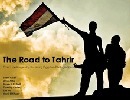 |
The Road to Tahrir: Front Line Images by Six Young Egyptian Photographers ~ Sherif Assaf et al. American University in Cairo Press, 2011 As the 25 January Revolution got under way and grew from strength to strength, six young Egyptian photographers found themselves following and documenting the events in different parts of Cairo, and converging - as the demonstrations converged - on what became the focal point of the revolution, Tahrir Square. Between them they photographed many of the unprecedented and startling events around the city and in the square, from the early battles of the protesters against heavily armed security forces, through the attacks by paid thugs on camel and horseback, and the peaceful occupation of Tahrir Square, to the victory celebrations and the inspiring clean-up afterward. Together in this stunning visual record they present the days of the Revolution in sequence, from tear gas to tears of joy, picturing a story of determination and courage that inspired the world. |
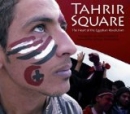 |
Tahrir Square: The Heart of the Egyptian Revolution ~ Mia Grondahl American University in Cairo Press, 2011 When Egyptians began demonstrating against the regime of President Hosni Mubarak on 25 January 2011, few could anticipate that the demonstrations would grow into a revolution to astonish the world. Millions of Egyptians were soon joining in every day in cities across the country, but Tahrir Square became the beating heart of the revolution, its center, its life force, and its spirit, a spirit that was peaceful, inclusive, creative, and determined. Swedish photographer Mia Gröndahl returned day after day to the square, to record the incredible tent city within a city that would not budge until the president did, and to capture the great humanity of the revolution that impressed Cairo, Egypt, and the world. This book presents a selection of her moving photographs from those historic days, along with the testimony in words of some of the people who were there. |
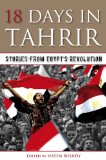 |
18 Days in Tahrir - Stories from Egypt's Revolution ~ Hatem Rushdy Haven Books Ltd.,, 2011 Ordinary Egyptians had the world in thrall during Egypt's 2011 revolution, whose epicenter was in Cairo's Tahrir ('Liberation') Square. Workers, activists, businesspeople, students, housewives, Muslims and Christians - all massed together on January 25. After just 18 days of peaceful protest, they stunned the world when they succeeded in deposing President Mubarak. 18 Days of Tahrir tells the inside story of Eqypt's revolution through the compelling personal stories of protestors who took to the streets and braved teargas, rubber and live bullets in order to make the voices heard. |
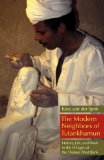 |
The Modern Neighbors of Tutankhamun: History, Life, and Work in the Villages of the Theban West ~ Bank
Kees van der Spek, foreword by Kent R. Weeks American University in Cairo Press, 2011 Until their recent demolition, the colorful mud-brick hamlets of al-Qurna village, situated among the Noble Tombs of the Theban Necropolis on the Luxor West Bank, were home to a vibrant community. Inhabiting a place of intensive Egyptological research for over two centuries, it was inevitable that Qurnawis should become part of the history of Egyptology and the development of archaeological practice in the Theban Necropolis. But they have mostly been regarded as laborers for the excavation teams or dealers in the illicit antiquities trade. This study counters the villagers’ stereotypical representation as tomb robbers, and restores an understanding of who they are as people living their lives in the shadow of valued cultural heritage |

